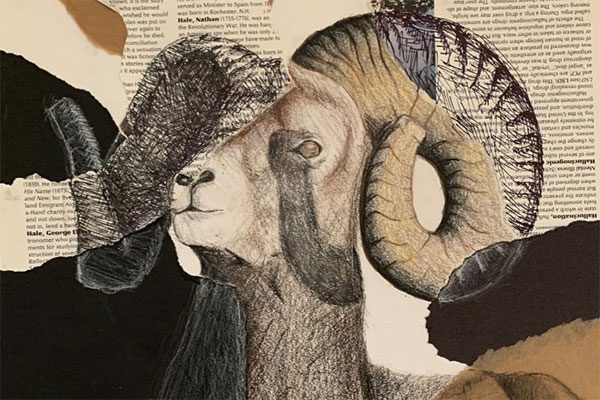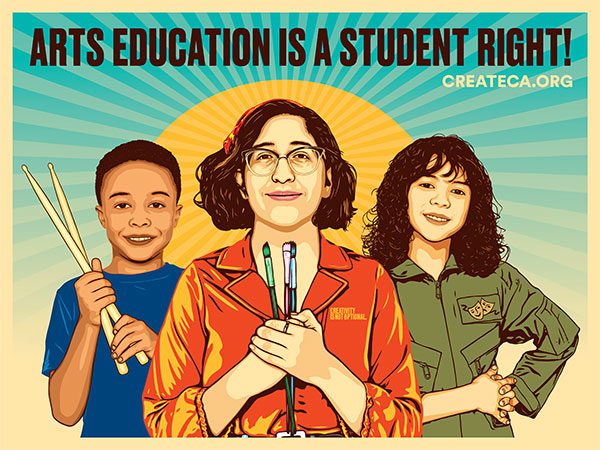
Incredible learning is taking place in the Ballard High School Video Production Program! The award-winning program, which started in 2001, has given opportunities to the students involved to show their work at film festivals and conferences, and regularly gain admission into competitive, prestigious colleges. To learn more, check out their blog.
 In part 1, we featured three students who love that they can take video production classes and foster their creative minds during school hours. This week, we talk to their teacher and director of this program, Matt Lawrence, about his experiences teaching the program for over 12 years.
In part 1, we featured three students who love that they can take video production classes and foster their creative minds during school hours. This week, we talk to their teacher and director of this program, Matt Lawrence, about his experiences teaching the program for over 12 years.
Provide an example of a break through or special moment in a student’s learning.
I’ve had a number of students who wind up in my classes because they were thinking of becoming movie critics. They enjoy going to films; they enjoyed reading people’s reflections about experiences they have – what movies make them think about; how movies are put together. And I thought what was very interesting is in every case, they wound up discovering that they loved making films more than they love just writing about them. So, they move from being commentators to being creators.
It’s one of the exciting things about the way that the tools have become more accessible. Until very recently there were only a small number of people filling that screen, and now that’s just exploded, and it’s so exciting to be on the crest of that wave and see how it’s changing.
Do you feel like you’re filling a gap in students’ learning experiences by providing a program that’s focused around technical & creative arts skills?
One thing that I think has a lot of educator’s concerned about the testing climate that we’re in right now is that there are so many valuable 21st century skills that aren’t tested on the types of standardized tests that students are being subjected to on an increasingly rapid rate. When you look at things like creative problem-solving and leadership, collaboration – these are complex social skills that are so important for all kinds of different, valuable life experiences, but they’re not the kinds of things that you develop if you’re teaching to one of those standardized tests. And then students are taking these tests that involve a lot of rote memory. In that sense, I think classes like this provide a lot of valuable, real-world skills and education that I’m afraid are at risk of being sort of given short shrift. I think the time in the school day is becoming shorter as we have more emphasis on these tests.
How have you seen students take the skills/learning developed in the VPP outside of the classroom?
Two students from this program, Jesse Harris & Kyle Seago, co-founded the National Film Festival for Talented Youth (NFFTY). What started as an evening of films by youth 22 and younger at SIFF Cinema has since become the largest youth film festival in the world. And it happens every spring right here in Seattle. And that’s definitely taking the skills outside the classroom, and building something. So, that’s one example that comes to mind right away.
Do you partner with other departments in the school? Community and arts organizations? If so, can you provide any examples of projects or collaborations?
For a long time, we were part of an interdisciplinary digital filmmaking program here at Ballard (HS), and we were linked with language arts. Then, they moved toward curriculum alignment that became harder to sustain, but it’s still something I’m very interested in.
We’ve also had students intern at local television stations, and community media channels, as well as various production houses in the Seattle area, such as OutPost Media; some feature films shot in the Seattle area – most recently, last summer, Lynn Shelton’s ‘Laggies’ that was shot right here in Ballard, and of course, The National Film Festival for Talent Youth.
Do you keep in touch with any of your former students? Are any of them involved in the film industry or arts-related industries?
This is one of the things that I’m really, really pleased about, and I think that makes our program kind of unique. Graduates of the program who pursue production frequently gain admission to college film and television programs rated as the best in the nation. Just in the past couple of years, graduates have gone on to film and television programs at NYU, the University of Southern California, Rhode Island School of Design, The Australian School of Radio, Television and Film, Loyola-Marymount University in Los Angeles, Columbia College in Chicago, and Emerson College in Boston – all programs that the Hollywood Reporter ranks among the top in the country. And the former students have been wonderful about staying in touch. They support current students by returning for guest lectures, hosting students who visit college programs in Los Angeles, New York or Boston, and giving informal tours at their colleges when we visit.
One of the things we do each year – I take advanced students to LA to tour college programs in film and television, and tour the industry. And in addition to the official tours, alumni from this program actually give us informal tours of their colleges. One of the students who went to NYU a few years back actually returned to Seattle while studying in college to shoot a short that he had students in the Ballard program crew. The students served as art directors, sound recorder, camera operator and lighting director.
That’s pretty incredible.
Yeah, it really is. It’s like something that I’ve seen happen with college programs, but I didn’t anticipate that that would happen in high school. And yet, these students stay in touch, and they’re really interested in supporting the new students coming into the program.
Program alumni, in terms of industry – they’re writing for series television or crewing feature films in Los Angeles. They’re producing advertising and educational television programs in New York City. They’re doing play-by-play sports-casting; they’re doing art direction for advertising in Chicago, among other things.
How has this experience impacted you, i.e., your practice as an educator and artist? What have you learned/do you learn from your students?
Oh boy – that’s a really good question, and it’s so big. Because I learn from my students every day. I mean really, if you stop learning, you shouldn’t be teaching because an important part of teaching is understanding students. Everybody teaches; everybody learns. We say that in class all the time. It’s part of leadership development. Students who are more experienced – they share their knowledge with the students who are coming up. Media production is a huge and complex area; it’s a synthesis of arts and technologies. And so, we learn from each other all the time.
***
This program is making waves, but only a few high schools in our city offer similar courses.
What if every high school in Seattle Public Schools offered robust arts and technical programs?
We envision a Seattle where programs like this are available in all Seattle Public High schools.
Students in the Seattle Public High School (SPS) said that they wanted more opportunities to make connections between arts and careers. We want to promote these opportunities, as they reflect student interests, engage community resources, build tangible skills, and promote creative and critical thinking.
While some high schools already have strong programs similar to Ballard’s Video Production Program, such as Theater Technology at Roosevelt High School and Video Production at Ballard High School, under the current neighborhood Student Assignment Plan these programs are available only to students enrolled in those schools.
However, efforts to support better alignment of arts and technical education opportunities within the District are already happening. For example, SPS is working to develop Media Arts Skills Centers. These would be accessible to junior and senior students, and they would be a space to pursue arts-related careers that include the following industries — Music Production and Distribution, Theater Technology, Film and Video Production, Graphic Design, and Digital Animation and Game Design. Also, students are now able to take a continuum of classes in fine arts while receiving instruction in career related content, while meeting their graduation requirements. This is thanks to SPS Visual and Performing Arts Department, which created a cross-credit process for Career and Technical Education (CTE) Programs and Fine Arts, allowing for continued instruction for career related content in high schools.
Career arts related programs should be available in every high school and accessible to all SPS students – a belief that The Creative Advantage is working towards making a reality.
Photo provided by Matt Lawrence


